If you’re like most people, you probably don’t put a lot of thought into how tight your treadmill belt should be. After all, as long as it’s not coming off, it shouldn’t matter, right? Wrong. The tension of your treadmill belt can have a big impact on your workout. Here’s what you need to know about finding the perfect tension for your treadmill belt.
How Tight Should A Treadmill Belt Be?
When it comes to using a treadmill, the tension of the belt is an important factor.
To check if the treadmill’s belt is tight enough, start by pressing your hand down firmly on the middle of the belt. If it dips at all under your pressure, then it needs more tension. In order for you to adjust this, usually a knob is situated at the front of the machine which can be manipulated easily.
Once you have tightened the belt, do a quick test run at a low speed just to make sure everything feels comfortable and secure. If you’re still feeling some instability or movement while running, then you may need to tighten the belt further.
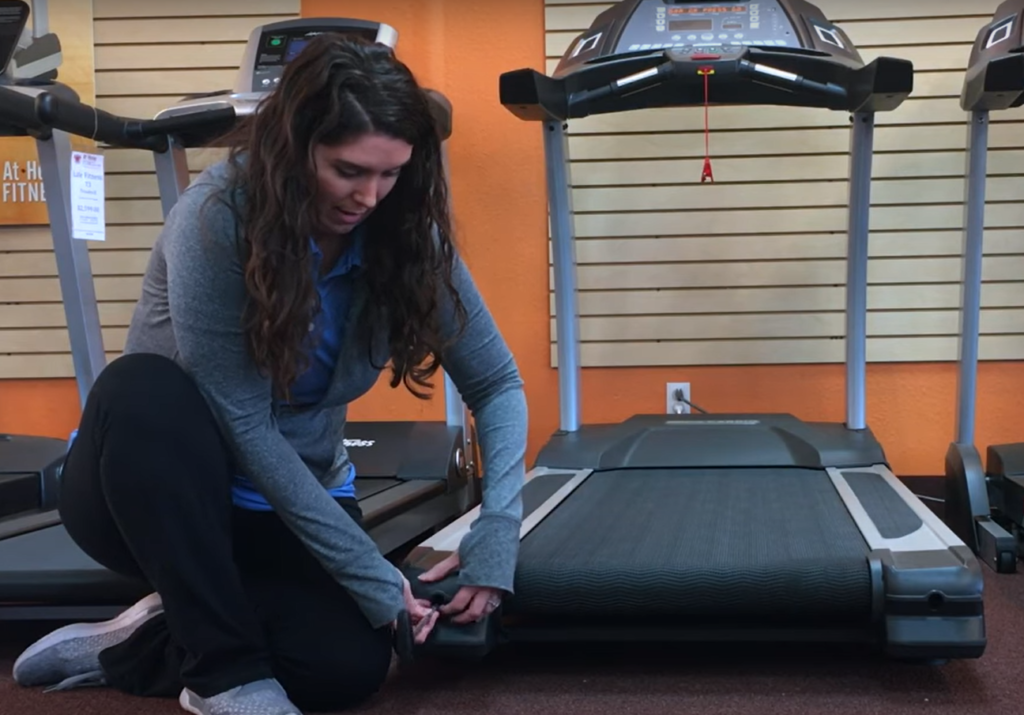
It’s important to note that if the belt is too tight, it can cause discomfort or even injury. If it feels too restrictive, then stop and loosen the belt slightly before continuing with your workout. Remember, a loose enough belt will provide a comfortable platform for your feet while absorbing some of the shocks from foot impact – this makes it an essential part of any treadmill safety setup. [1]
What Is A Treadmill Belt & Why Is It Important?
The treadmill belt is the epitome of a treadmill’s success. It’s the surface you walk or runs on and it’s usually made up of layers of PVC, rubber, and cotton. Not only does it provide cushioning for your feet and reduce the impact as you exercise, it also helps to keep the machine moving in a smooth and controlled way. With all this in mind, it’s essential that the belt is positioned correctly to ensure maximum comfort and safety when using the equipment. [2]
Reasons Why Your Treadmill Belt Might Be Slipping
Drive Belt May Be Loose
Serving as the critical link between the motor and the walking belt, the drive belt is an essential part of every fitness machine. If your walking belt has become slack, it will cause slipping and require readjustment.
Incorrectly-Adjusted Belt Tension
If the tension of your treadmill belt is not adjusted correctly, you may experience slipping. Loose belts tend to slip more than tight ones.
Faulty Motor or Belts
If your motor or the belts are faulty they may need to be replaced in order for your treadmill belt to stop slipping. You should also check if any other components such as pulleys or rollers have worn out over time and require replacement.
Worn Out Walking Belt
Another potential cause of your treadmill belt slipping is when the walking belt has become excessively worn. This can cause it to stretch and become loose, resulting in slipping. Replacing the walking belt may be necessary if this is the case. [3]

The Belt Needs Lubrication
If the belt is dry and needs lubrication this can cause slipping. Lubricating your treadmill belt on a regular basis (every six months or so) will keep it running smoothly and prevent slipping.
The Risk With A Loose Treadmill Belt
A loose treadmill belt can pose a serious safety hazard. If the belt slips and slides excessively, it could cause you to trip or even fall off the machine. This can lead to serious injury if the speed is too high or an unexpected jolt occurs. In addition to this physical risk, a loose belt isn’t going to do your treadmill any favors either. The friction on the motor from a loose belt will cause it to work harder than it should, resulting in premature wear and tear and a shortened lifespan for your treadmill.
The Risk With A Tight Treadmill Belt
When it comes to the question of how tight a treadmill belt should be, it’s important to consider the potential risks involved. The first risk is that a too-tight belt can cause undue strain on the motor and other moving parts of the treadmill. This could lead to increased wear and tear on these components over time, leading to costly maintenance or repairs down the line.
Additionally, using a belt that’s too tight can make running uncomfortable and may even lead to injury if you slip off track due to an uneven stride pattern caused by restrictive belt tension. Finally, running on an overly tight belt significantly reduces your range of motion, resulting in shorter strides and less power from each step—allowing for fewer calories burned per minute and a less effective workout.
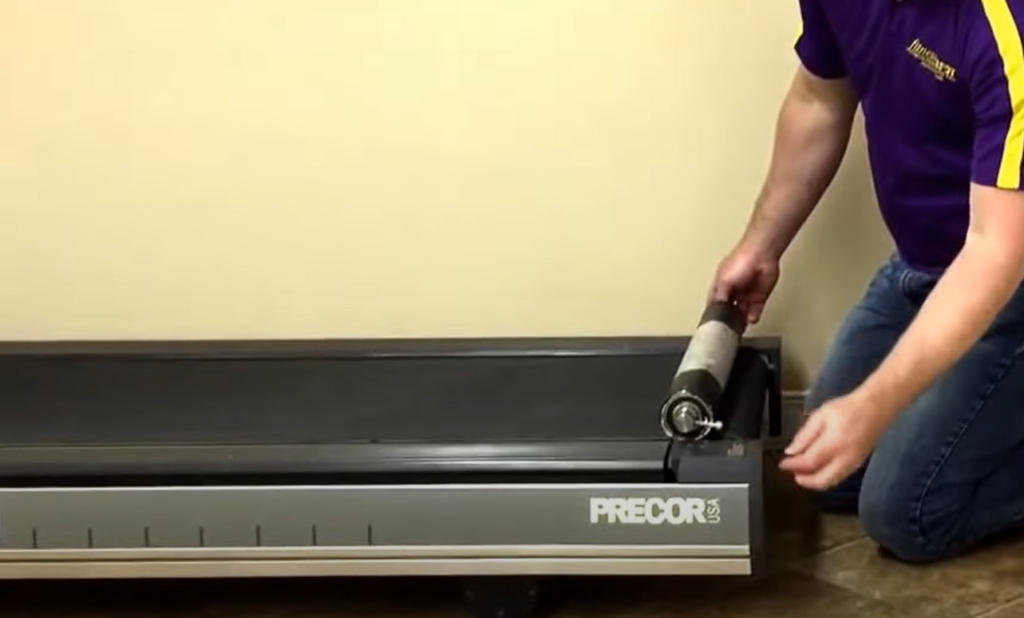
It’s clear that the right tension for your treadmill belt is an important factor in staying safe and maximizing the efficiency of your workouts. [4]
Tips And Warnings
Adjusting Left Or Right
If the belt seems to be off to one side, most treadmills have a level adjustment knob or button near the middle of the deck. This adjuster will move the entire treadmill belt left or right until it is centered.
Lubrication
It’s important to keep your treadmill lubricated for optimal performance and safety. Depending on usage and age, this may need to be done every 6 months-2 years. Check with your manual for the specifics of how and when to lubricate your machine properly.
Power Off When Adjusting/Cleaning
Always make sure you turn off the power before adjusting or cleaning any part of the treadmill. Without power, there’s no risk of accidentally starting it while someone has their hands on the belt, leading to injury.
Check for Excessive Wear
If your belt starts to show signs of excessive wear or damage, it is best to replace it sooner rather than later. Worn or frayed belts can lead to dangerous slipping and should be repaired as soon as possible.
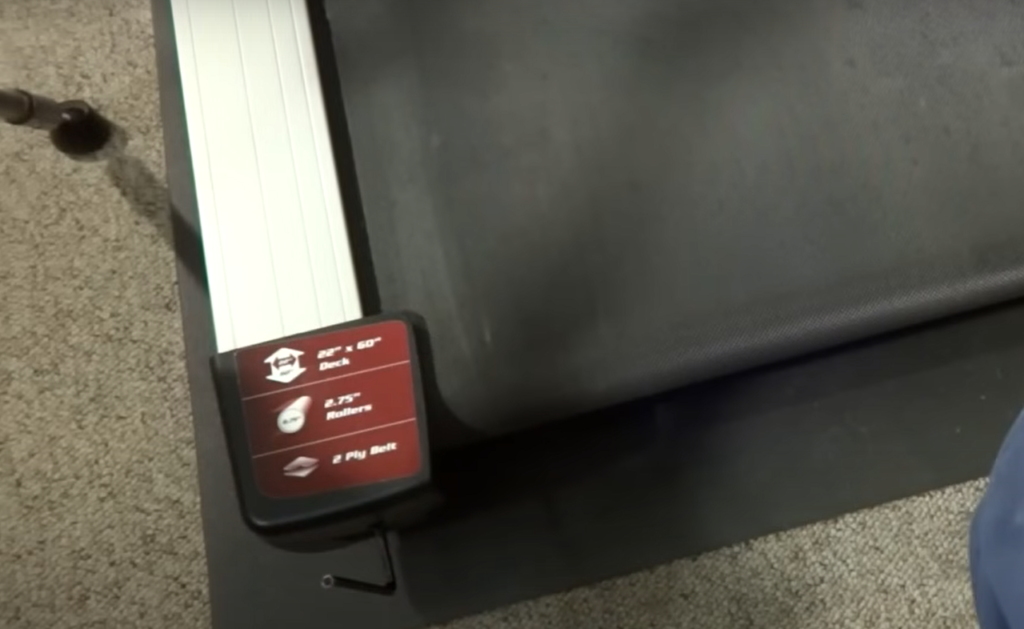
When Should I Replace My Treadmill Belt?
The life of a treadmill belt will vary depending on how often it is used, the lubrication of the belt and deck, and the weight placed on it. Generally, you should expect your treadmill belt to last between 500-1000 miles.
If the belt starts slipping or creating more noise than usual, this could be an indication that it needs replacing. Other signs you may notice include fraying, cracking, or tearing of the belt material. If you’re unsure whether your treadmill’s belt needs replacing it is best to consult a professional before attempting any repairs yourself.
A qualified service technician can inspect your equipment and determine if a replacement is necessary. They can also guide you in terms of which type of tread belt replacement is best suited for your machine. If a replacement becomes necessary, it’s important to ensure that the new tread belt is properly tensioned and adjusted according to the manufacturer’s instructions. This will help maximize its lifespan and keep your workout safe and comfortable. [5]
How to Move a Treadmill?
Moving a treadmill can be quite challenging without the right equipment and knowledge. To make sure you do it correctly, first, gather all of the appropriate tools and clothing for the job. This includes gloves, proper lifting straps if available, knee pads (if needed), and any hard plastic or cardboard to cover the flooring where it will be moved. Make sure that you have plenty of help too – two people are ideal for this job!
Now that you’re ready, begin by unplugging the treadmill from power sources if necessary; then tilt it up so that one person can carry each end while walking out to its new home. Be aware of any sharp corners or stairs as you move your treadmill – with two people carrying it between them, it can easily be damaged or cause harm to somebody. Once you have the treadmill in the desired room, make sure that all of the pieces are there and that nothing has shifted during transportation. Make sure the belt is properly aligned with no loose parts before re-plugging it into power sources. Finally, adjust the tension on your belt so that it runs smoothly without any creaking or jerking as you use it.
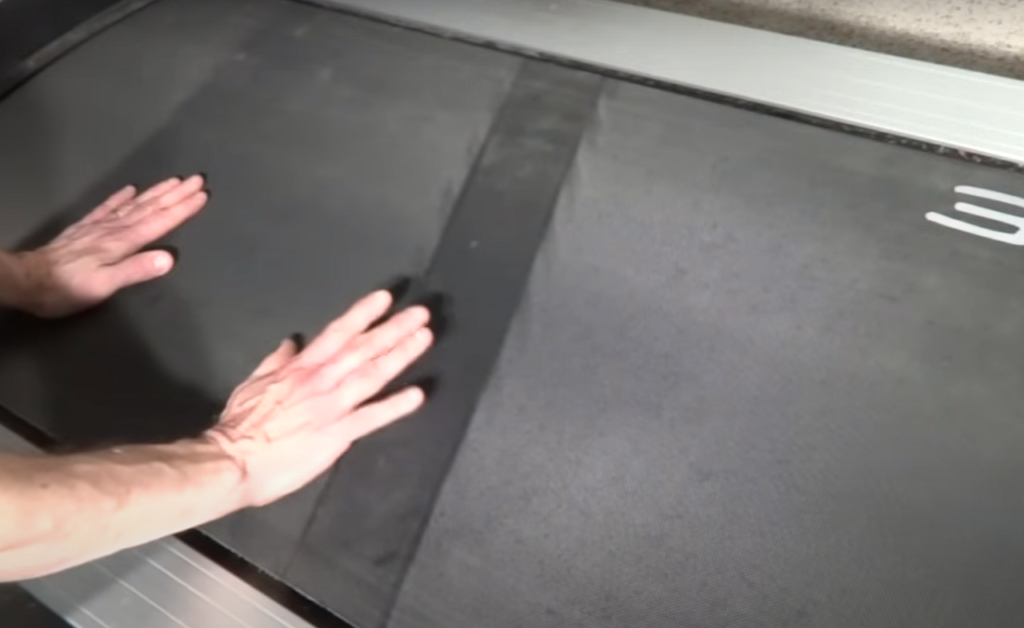
How to Use a Treadmill?
Treadmills are a great way to exercise indoors. They provide you with an efficient, effective workout no matter what the weather is like outside. But in order for your treadmill workouts to be as safe and effective as possible, it’s important that you know how to properly use them.
First and foremost, it is essential to make sure your treadmill has a secure belt before using it. The belt should be tightly set so that it does not slip when you run or walk on it. The tension of the belt can usually be adjusted via two screws located at either end of the treadmill — one in front and one in the back — which can be tightened or loosened with a hex key wrench (most models will come with one included). The belt should be set so that it moves at a moderate speed when pressed against the palm of your hand, without appearing too stiff or giving in too easily.
When using a treadmill, make sure to keep your hands and feet off the sides while the machine is running. It’s also important to start your workout at a low speed and gradually build up to higher speeds as you get used to the motion. Don’t forget to warm up before and cool down after each session, as this will help improve performance and reduce the risk of injury.
Using a treadmill regularly can help boost mental and physical health, but always remember to take proper precautions for safe exercise. By following these tips for how to use a treadmill properly, you can ensure that your workouts are as safe and effective as possible. [6]
How to Maintain a Treadmill?
Maintaining a treadmill is essential to ensure its longevity and optimal performance. To keep your treadmill in good condition, follow these tips:
- Clean the Running Belt – Make sure you regularly clean the running belt of your treadmill with a damp cloth or vacuum it regularly to remove any dirt or debris that may have accumulated over time;
- Lubricate the Running Belt – It’s important to lubricate the running belt on your treadmill every six months for best results. You can find special silicone-based lubricants formulated specifically for treadmills at most sporting goods stores or online retailers;
- Check and Tighten the Drive Belt – The drive belt should be checked frequently to make sure it’s not too loose or too tight. It’s best to use a measuring tape to measure the belt tension and adjust as needed. A good rule of thumb is that the drive belt should be just tight enough so that you can insert two fingers between it and the running board surface;
- Maintain Electronics – Make sure all electronic components are functioning properly, such as the console display, buttons and speakers. If there appears to be any issue with these parts, contact a qualified technician for repairs or replacements;
- Inspect the Deck and Cushioning System – Regularly inspect your treadmill’s deck and cushioning system for wear patterns or damage caused by overuse or misuse. Replace worn-out parts such as the belt, deck, and shock absorbers as needed to ensure optimal performance;
By following these steps regularly and taking the necessary precautions when using your treadmill, you’ll be able to enjoy its benefits for years to come. If you ever have any trouble with your treadmill, please contact a qualified technician for assistance.
How Much Does it Cost to Run a Treadmill?
The cost of running a treadmill will depend on several factors, such as the type of treadmill, its size and features, and your local energy rates. If you plan to use it often, you should also factor in the cost of maintenance and replacement parts.
Using average electricity costs in the U.S., it would cost approximately 7-21 cents per hour to run a basic treadmill; 14-42 cents per hour to run a mid-range machine; and 21-63 cents per hour to run a high-end model.
So, if you plan on running for one hour daily for the whole year, your total cost would amount to around $ 25 – $ 180 for a basic treadmill, $ 50 – $ 360 for a mid-range machine, and $ 75 – $ 540 for a high-end model.
Of course, these numbers will vary depending on your local electricity costs and how often you use the treadmill. It’s also important to factor in any additional costs associated with regular maintenance and repairs. Taking all of this into account can help you make an informed purchase decision that best fits your budget.
FAQ
How do I know if my treadmill belt is tight enough?
The tension of your treadmill belt can be tested in several ways. To begin with, you should inspect the belt for any visible signs of wear or fraying. If there is any noticeable damage to the belt, it is likely that it needs replacing and not just tightening. If the belt appears to be in good condition, try running on the treadmill at a slow speed and observe how much movement there is in the running surface. If you notice excessive bouncing or shifting while you run, then this means that the belt may not be tight enough and could do with some adjustment. You can also check if a treadmill belt is tight enough by measuring its tension using a tension gauge available from most fitness stores.

What happens if you over-tighten a treadmill belt?
If you overtighten a treadmill belt, it can cause premature wear and tear on the belt as well as damage to other components of the machine. Over-tightening the belt also affects its overall performance and can make running uncomfortable by causing excessive bouncing or slipping while in use. It is therefore important to check the tension of your treadmill belt regularly but be sure not to over-tighten it.
How tight should a sole treadmill belt be?
Sole treadmills have a recommended belt tightness range of around 0.5-2.0mm on the drive roller. To check this, you can either use a tension gauge or simply look for excessive movement in the running surface while the treadmill is in use at a slow speed. If you find that the belt has too much slack, then it should be tightened until it falls within this range.
How often do I need to tighten my treadmill belt?
Ideally, you should check your treadmill belt’s tension every 3 months or so and tighten it if necessary. You may also need to adjust the tension after making any major changes such as switching from walking to running or changing incline settings. Remember not to over-tighten your belt and always refer to the manufacturer’s instructions for the recommended range for your specific model.
Why does my treadmill belt keep moving to one side?
If your treadmill belt is continually moving to one side, then this may indicate that the belt is too loose and needs to be tightened. You should also check for any visible damage or fraying on the belt as sometimes this can cause similar problems. If tightening the belt does not resolve the issue, it may be necessary to replace it.
What are the consequences of an improperly tensioned tread belt?
An improperly tensioned tread belt can cause premature wear and tear on both the belt itself and other components of the treadmill. It can also lead to increased noise levels while in use as well as reduced performance due to excessive slipping or bouncing while running. Therefore, it is important to ensure that your treadmill’s belt is always set at the right tension for optimal performance.
Is it Ok to walk barefoot on a treadmill?
No, it is not recommended to walk barefoot on a treadmill as this can cause slippage and potentially lead to injury. It is best to wear appropriate footwear such as running shoes with good grip when using the treadmill. This will help provide more stability while running and also protect your feet from any potential hazards.
Useful Video: Treadmill Belt Tension Guide
Conclusion
In conclusion, the best way to find out how tight your treadmill belt should be is to follow the manufacturer’s instructions. If the belt is too loose or too tight, it can cause damage to the motor, affect your performance and increase risk of injury. It’s important to keep in mind that when adjusting the tension of a treadmill belt, always start with less tension and use small increments to find the ideal level for you. Ultimately, your comfort and safety come first!
If you have any questions or concerns about adjusting your treadmill’s tension belt, please contact a qualified professional to help ensure the proper installation and maintenance of your equipment. With a few simple steps, you can enjoy safe and comfortable workouts on your treadmill without worrying about injury or damage.
Good luck!
References:
- https://www.oglf.org/how-tight-should-a-treadmill-belt-be/
- https://www.runnersworld.com/gear/a41396345/how-to-clean-a-treadmill-belt/
- https://boxlifemagazine.com/slipping-on-treadmill/
- https://www.oglf.org/how-tight-should-a-treadmill-belt-be/
- https://www.treadmillreviews.net/treadmill-care-maintenance-making-your-treadmill-for-the-home-last/
- https://www.wikihow.fitness/Use-a-Treadmill-For-Beginners





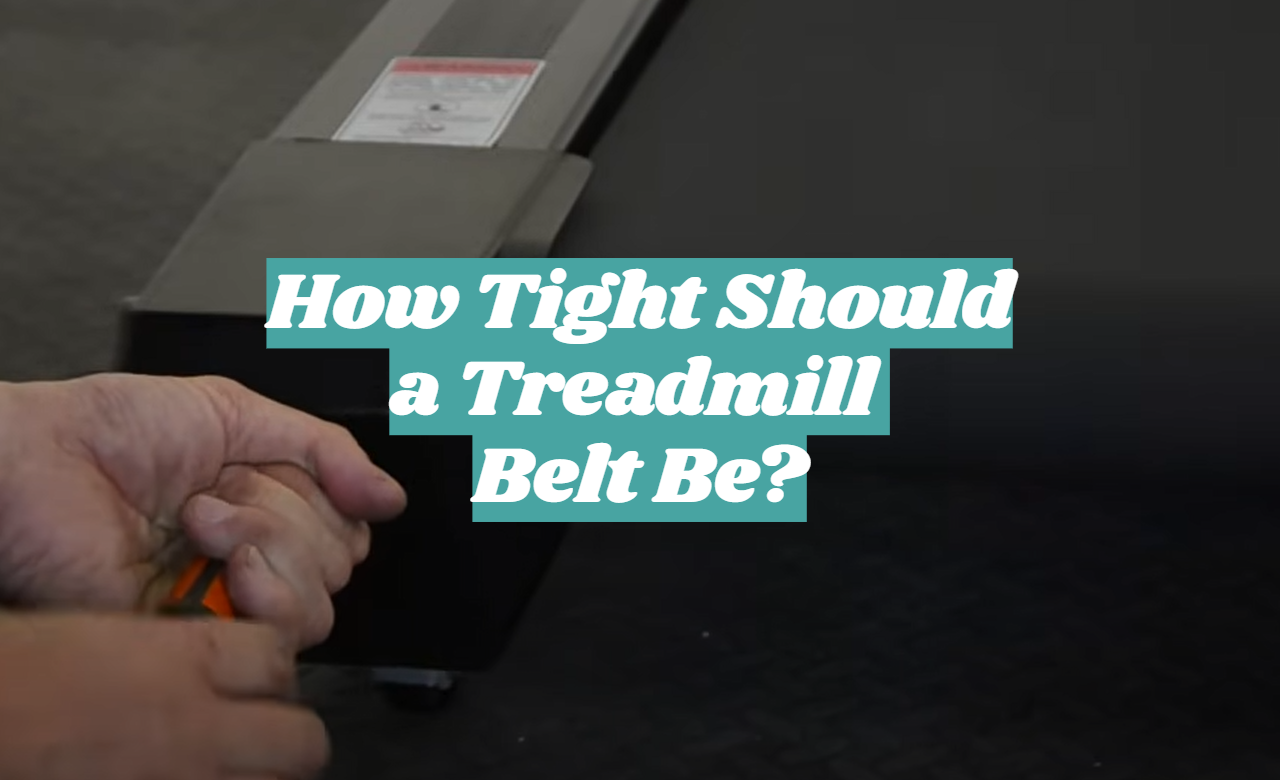




Leave a Review